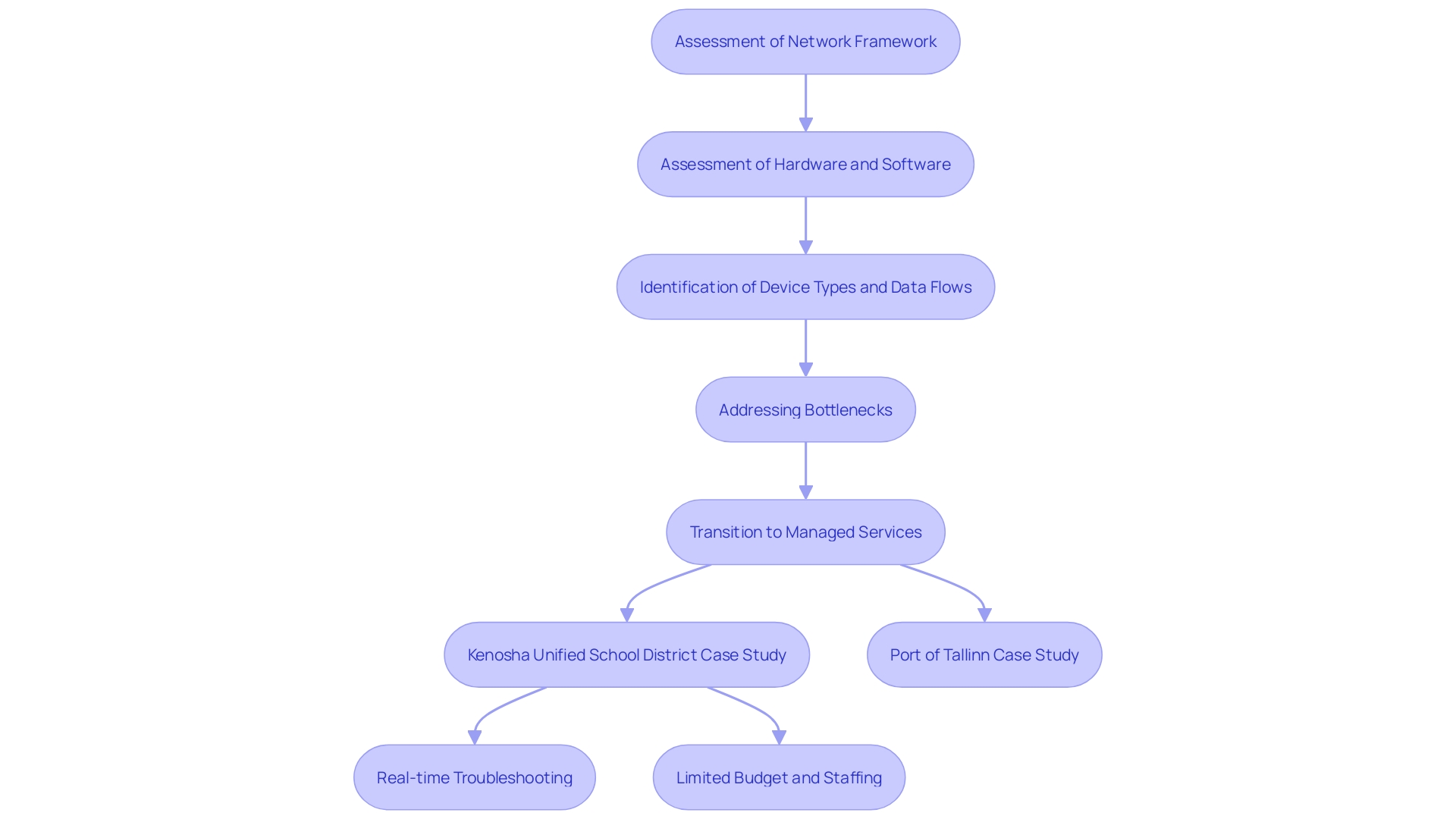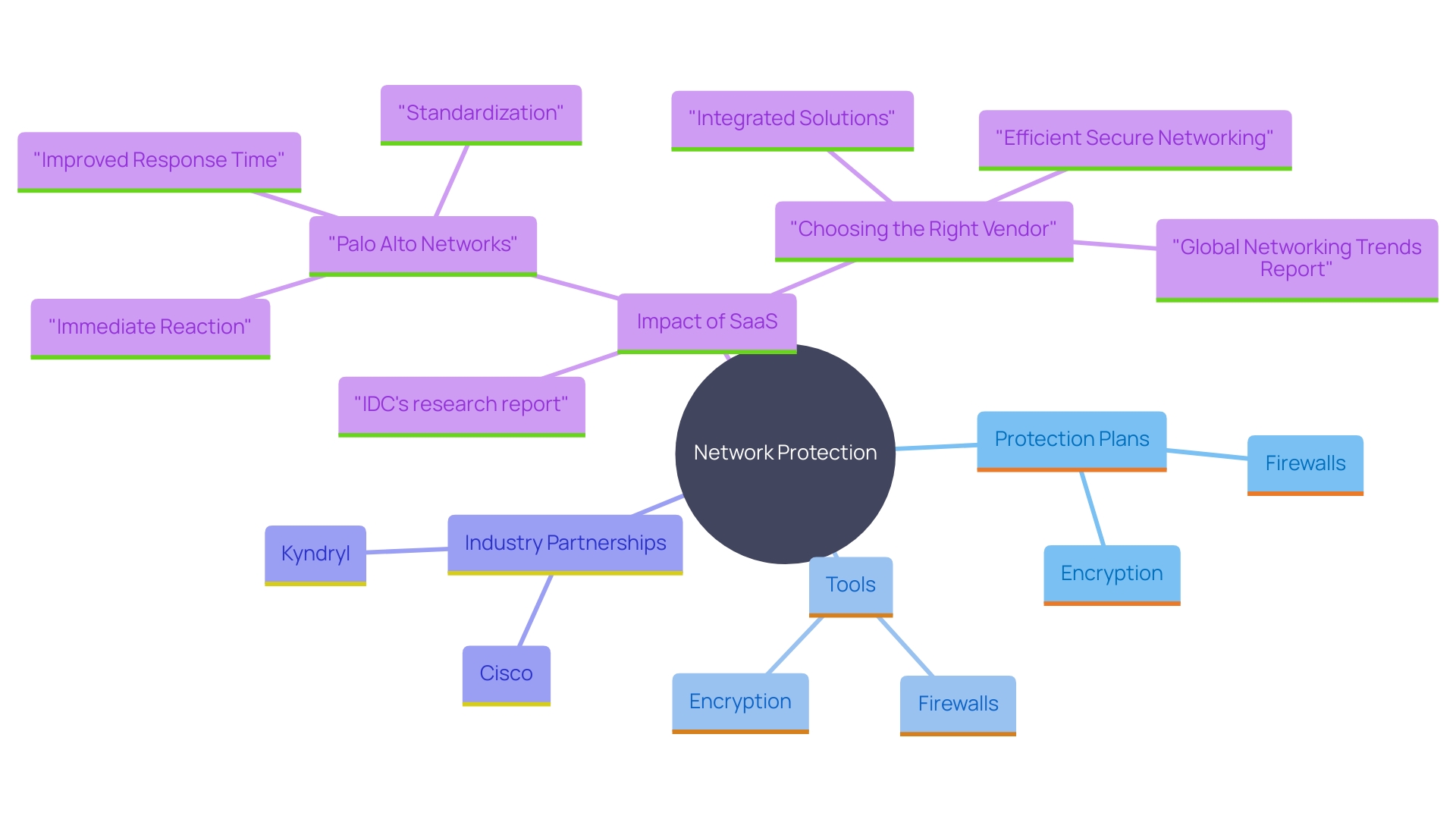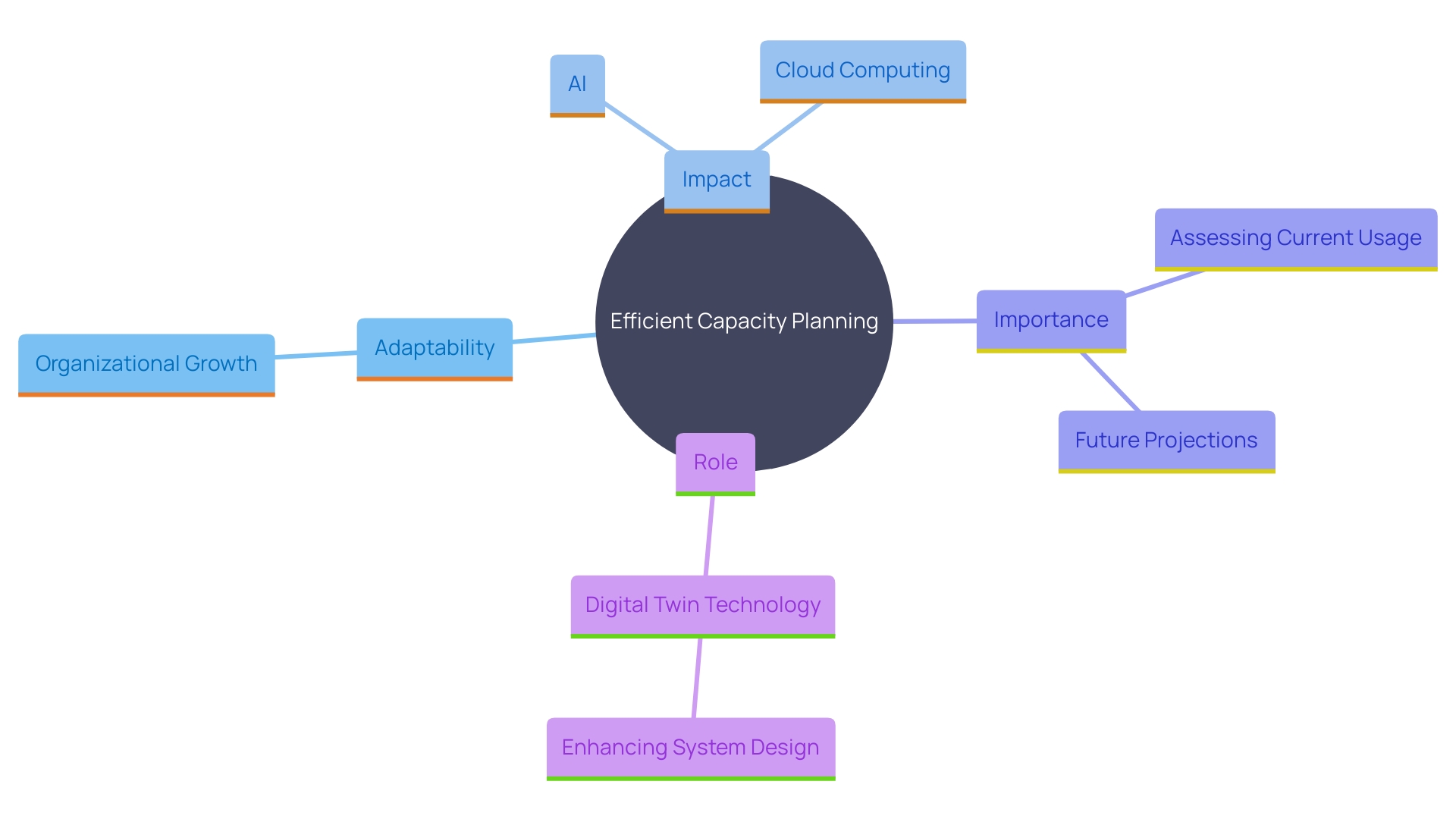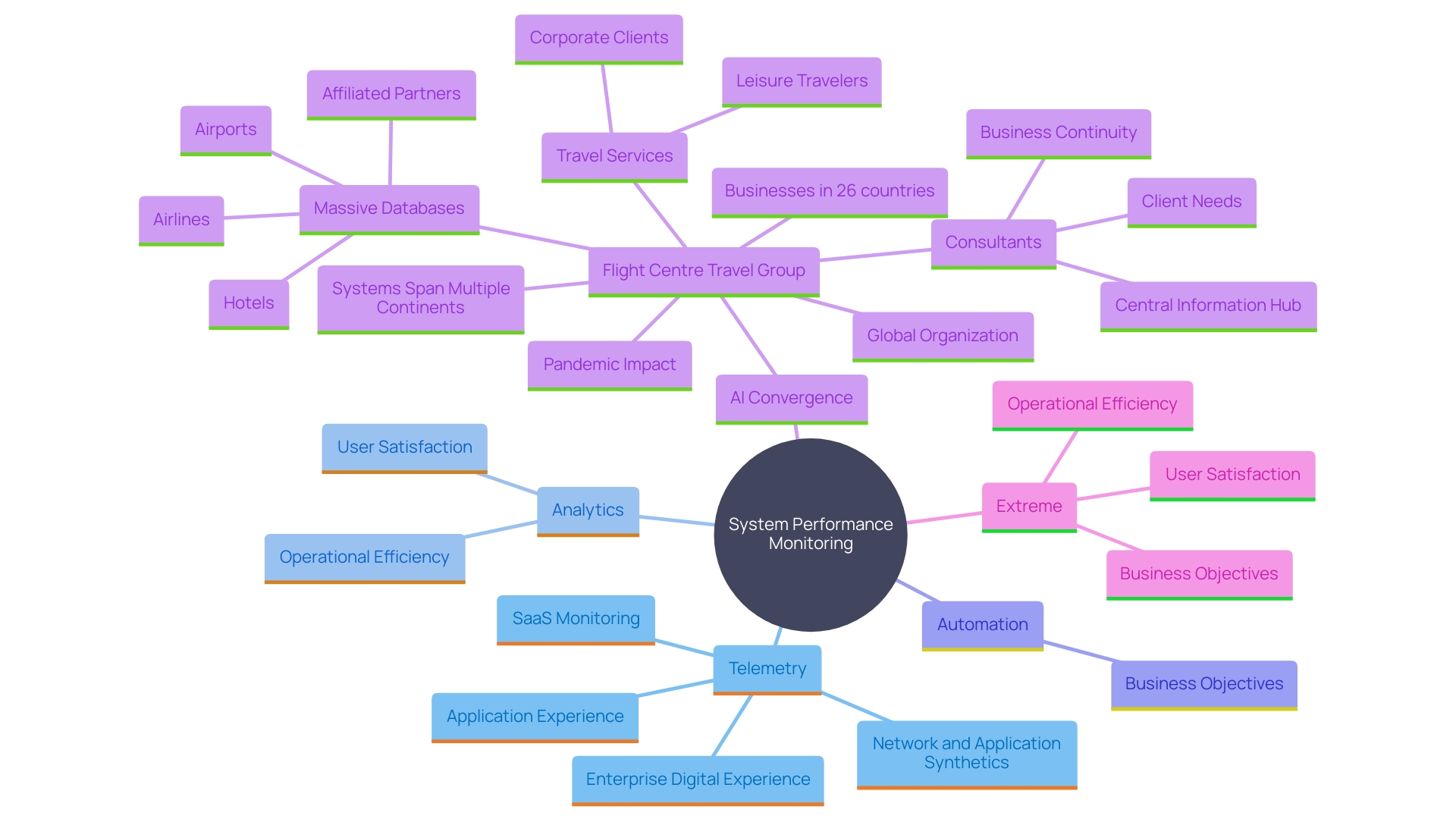Introduction
In an era defined by rapid technological advancements, the deployment of managed network solutions has become an essential strategy for organizations aiming to enhance efficiency, security, and scalability. This article delves into the critical components of implementing managed network solutions, starting with a thorough understanding of existing network infrastructure. The discussion extends to essential aspects of network security and compliance, highlighting the importance of robust security protocols and alignment with industry standards.
Additionally, the article addresses the significance of capacity planning and scalability to meet evolving organizational demands. Finally, it emphasizes the necessity of continuous monitoring and improvement to ensure the network's resilience and optimal performance. Through real-world examples and case studies, the article underscores how tailored managed solutions can address specific challenges, thereby driving operational excellence and supporting digital transformation.
Understanding Your Network
A successful execution of managed network approaches begins with a thorough comprehension of your existing network framework. Begin with a comprehensive assessment of your existing setup, covering all hardware, software, and configuration details. Identify the types of devices connected, data flow paths, and any bottlenecks or failure points. This foundational knowledge is crucial for customizing managed services to your organization's specific needs.
For instance, the Kenosha Unified School District (KUSD) in Wisconsin, which supports over 30,000 devices across 40 schools, faced significant challenges in managing their intricate system. Restricted finances and personnel resources required a solution that could improve connectivity and simplify management. By collaborating with a managed services provider, KUSD was able to transition to a cloud-managed system, allowing for real-time troubleshooting and enhanced efficiency.
In another case, the Port of Tallinn, one of Europe’s fastest-growing seaports, needed to support an expanding array of services, including video streaming and security systems. By enhancing their core systems and infrastructure, they were able to increase capacity and remove downtime, ensuring seamless operations across their premises.
Integrating AI into system management can also provide significant advantages. Juniper Networks states that its AI-Native Networking Platform can lower operational costs by as much as 85%, remove up to 90% of trouble tickets, and decrease incident resolution times by up to 50%.
Such examples highlight the significance of comprehensive evaluations and the application of advanced, managed strategies to tackle specific organizational challenges and enhance overall system resilience and efficiency.

Network Security and Compliance
Improving network protection is essential for the effective implementation of managed network solutions. Executing a thorough protection plan involves creating strong procedures for information safeguarding and access management, in accordance with industry regulations and standards. This is highlighted by Burger King India's implementation of the Fortinet Security Fabric, which offers a cohesive method to protection across multiple platforms—from remote work devices to extensive telecom systems. Frequent updates to protection policies are essential to combat emerging threats, requiring the use of advanced tools like firewalls, intrusion detection systems, and encryption to safeguard sensitive information.
An anticipatory approach not only reduces dangers but also guarantees system integrity and operational continuity. For instance, the partnership between Cisco and Kyndryl has resulted in scalable protection offerings that support Secure Access Service Edge (SASE) architecture. This collaboration illustrates the importance of combined approaches in providing safe and robust infrastructures. 'Additionally, the transition towards SaaS and virtual-based offerings, expected to lead more than half of the Network Protection market by 2026, underscores the changing environment of network protection.'.
Effectiveness in protection management is also a key consideration. Kevin Morrison, Vice President & Chief Information Security Officer at Driven Brands, emphasizes that changing a firewall policy across hundreds of devices now takes minutes instead of a day, thanks to Fortinet's solutions. This efficiency eliminates the need for extra personnel and combines various protective tools into a unified system, decreasing complexity and risk. Embracing such integrated, AI-powered platforms allows organizations to prevent new and evolving threats, thereby supporting digital transformation without compromising security.

Capacity Planning and Scalability
Efficient capacity planning is essential for guaranteeing that your managed systems can adapt to your organization's increasing needs. 'Given the rapid advancements in AI, cloud computing, and other technologies, systems must evolve into cognitive and automated ecosystems capable of dynamic adaptation to new business and operating models.'. A comprehensive assessment of current usage patterns and future growth projections is essential for determining the necessary bandwidth and resources. Implementing scalable solutions that allow for seamless upgrades and expansions without significant disruption is vital. This foresight will enable your system to handle increased traffic and new applications while maintaining optimal performance. Utilizing digital twin technology for what-if analyses can further improve system design and operation, ensuring your infrastructure stays agile and responsive to emerging demands.

Continuous Monitoring and Improvement
Ongoing observation of system performance is essential to proactively detect and address problems. By utilizing sophisticated analysis and immediate observation tools, organizations can collect vital information on system usage and performance metrics. 'This information, collected through telemetry, provides a comprehensive view of the system's current state and trends over time, such as network latency and packet loss.'. Regular review of this data enables informed decision-making for necessary adjustments and improvements.
For instance, the Flight Centre Travel Group, operating in a competitive industry, utilizes these monitoring tools to connect massive databases across continents, ensuring business continuity and operational efficiency. Such proactive measures align with the organizational goals of enhancing service delivery and user satisfaction, ultimately ensuring that the managed system solution remains in sync with business objectives.
Steve Douglas, Head of Market Strategy at Spirent, emphasizes the significance of analytics, automation, and AI convergence for progress in systems. This integration is crucial for organizations like Extreme, which supports over 50,000 customers globally by enhancing customer experiences, reducing risk, and improving operational efficiency.
Furthermore, the strict implementation of monitoring and observability can bridge visibility gaps in digital environments, from applications to the edge, as noted by OpsRamp. This holistic approach to network performance management underscores the necessity for continuous improvement, ensuring that the network infrastructure is robust, reliable, and capable of driving the organization's technological vision forward.

Conclusion
Implementing managed network solutions is a multifaceted endeavor that necessitates a thorough understanding of existing infrastructure, robust security measures, and strategic capacity planning. An initial assessment of the current network setup lays the groundwork for tailored solutions that address specific organizational needs. Case studies, such as those of KUSD and the Port of Tallinn, illustrate how a deep understanding of network dynamics can lead to significant improvements in efficiency and resilience.
Network security and compliance are paramount in ensuring the integrity of managed solutions. By adopting comprehensive security strategies, organizations can protect sensitive data and align with industry standards. The integration of advanced tools and platforms, as demonstrated by collaborations like that of Cisco and Kyndryl, showcases the importance of a proactive security posture in the face of evolving threats.
Efficient security management not only mitigates risks but also enhances operational continuity, thereby supporting digital transformation efforts.
Capacity planning and continuous monitoring further enhance the effectiveness of managed network solutions. By anticipating growth and implementing scalable solutions, organizations can adapt to changing demands without disruption. Continuous performance monitoring, aided by advanced analytics, allows for real-time adjustments that keep networks aligned with business objectives.
This holistic approach ensures that organizations remain agile and responsive in an increasingly complex technological landscape.
In conclusion, the deployment of managed network solutions is essential for organizations seeking to optimize efficiency, security, and scalability. By prioritizing thorough assessments, robust security measures, strategic capacity planning, and continuous monitoring, organizations can navigate the challenges of the digital age with confidence, driving operational excellence and fostering innovation.




